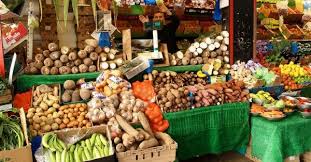Prices of agricultural products are forecast to decline by 5% in 2023, reflecting better prospects for global production alongside lower input costs, particularly for fertilizers.
According to the World Bank Food Security Update, despite these projections, prices are expected to remain above pre-pandemic levels.
In addition, the report highlights the possibility that fertiliser prices will continue to rise in response to higher natural gas prices caused by the closure of several European fertiliser manufacturers.
In emerging markets and developing economies, the report said food insecurity remains a serious concern, driven by trade restrictions, weather-related events, and conflict, including the Russian invasion of Ukraine.
Since the last update on December 13, 2022, agricultural, cereal, and export prices have remained relatively stable.
Domestic food price inflation also continues to remain high in almost all countries.
West and Central AfricaThe report said food prices are 36% above the 5-year average.
Inflation averages 18% in an unfavorable environment shaped by the war in Ukraine and devaluation of some local currencies.
It added that conflict and instability continue to drive food insecurity, especially for internally displaced persons, of whom there are currently more than 6.1 million








